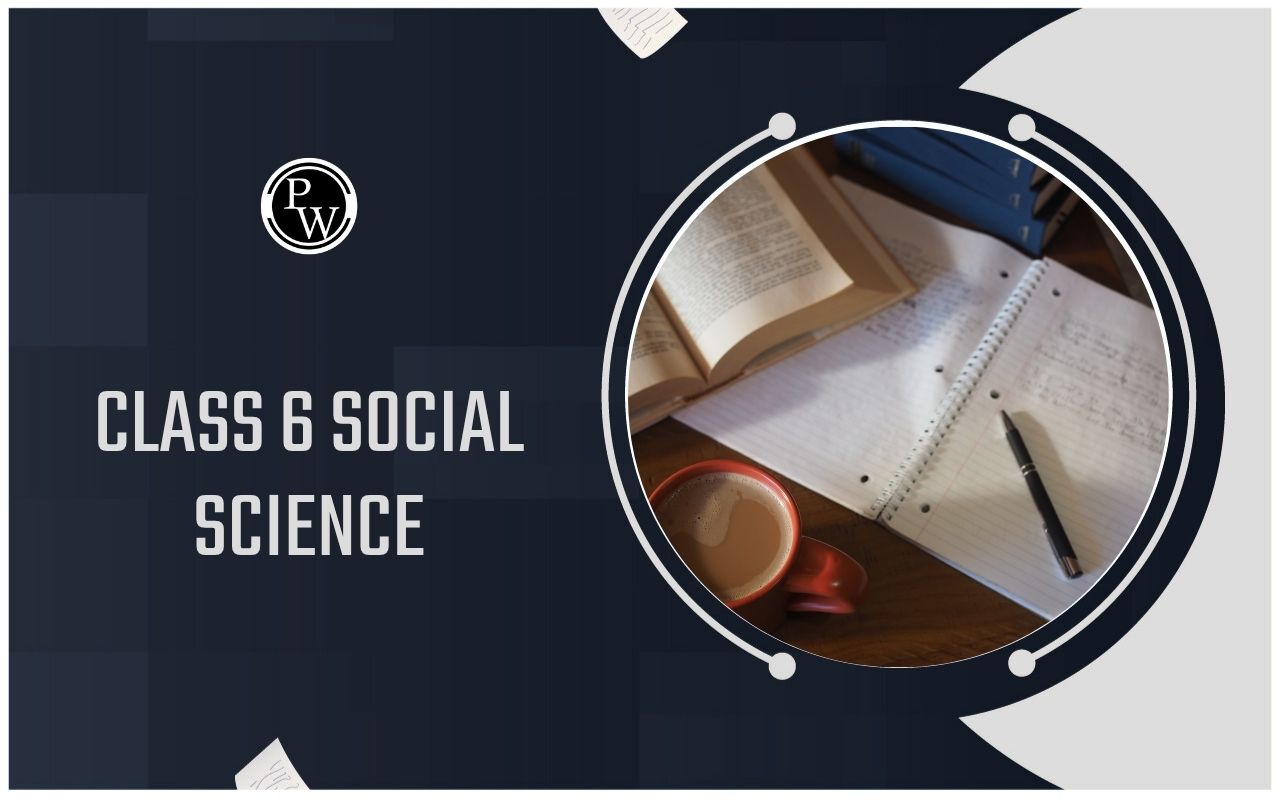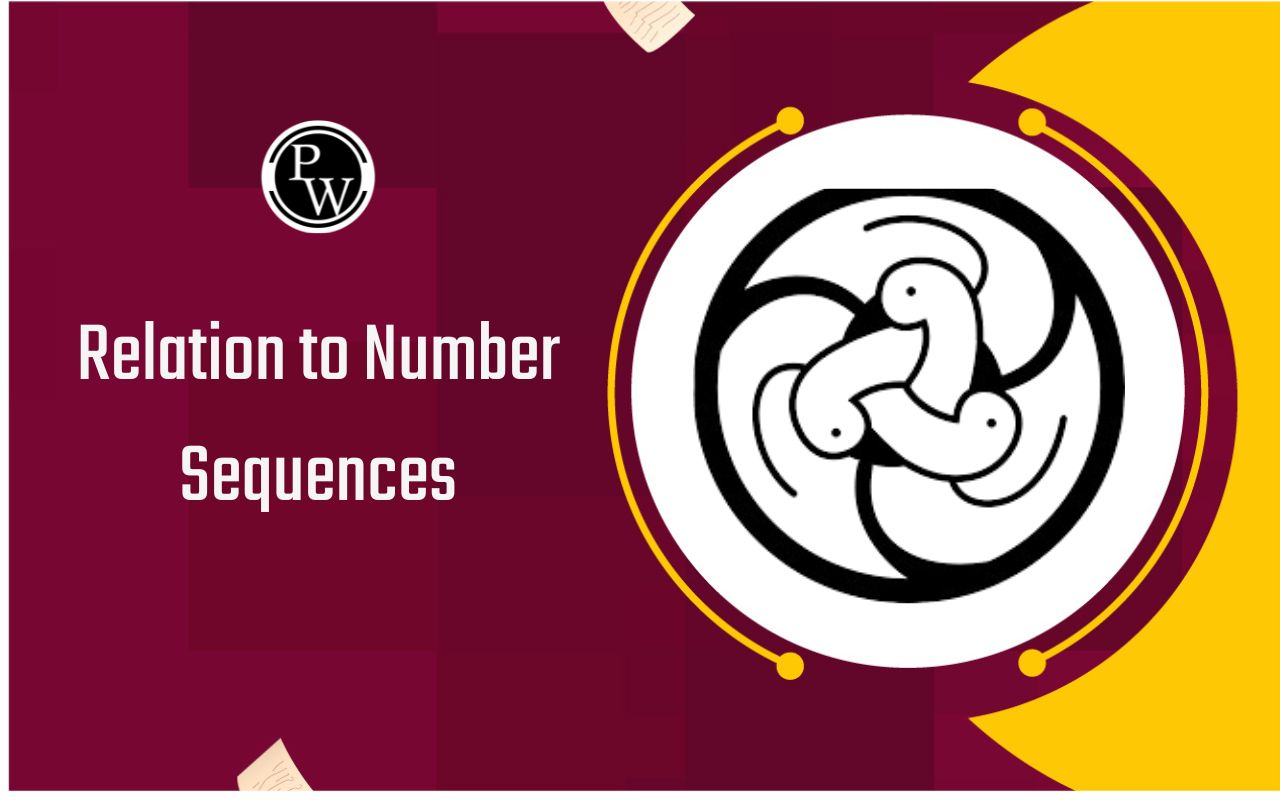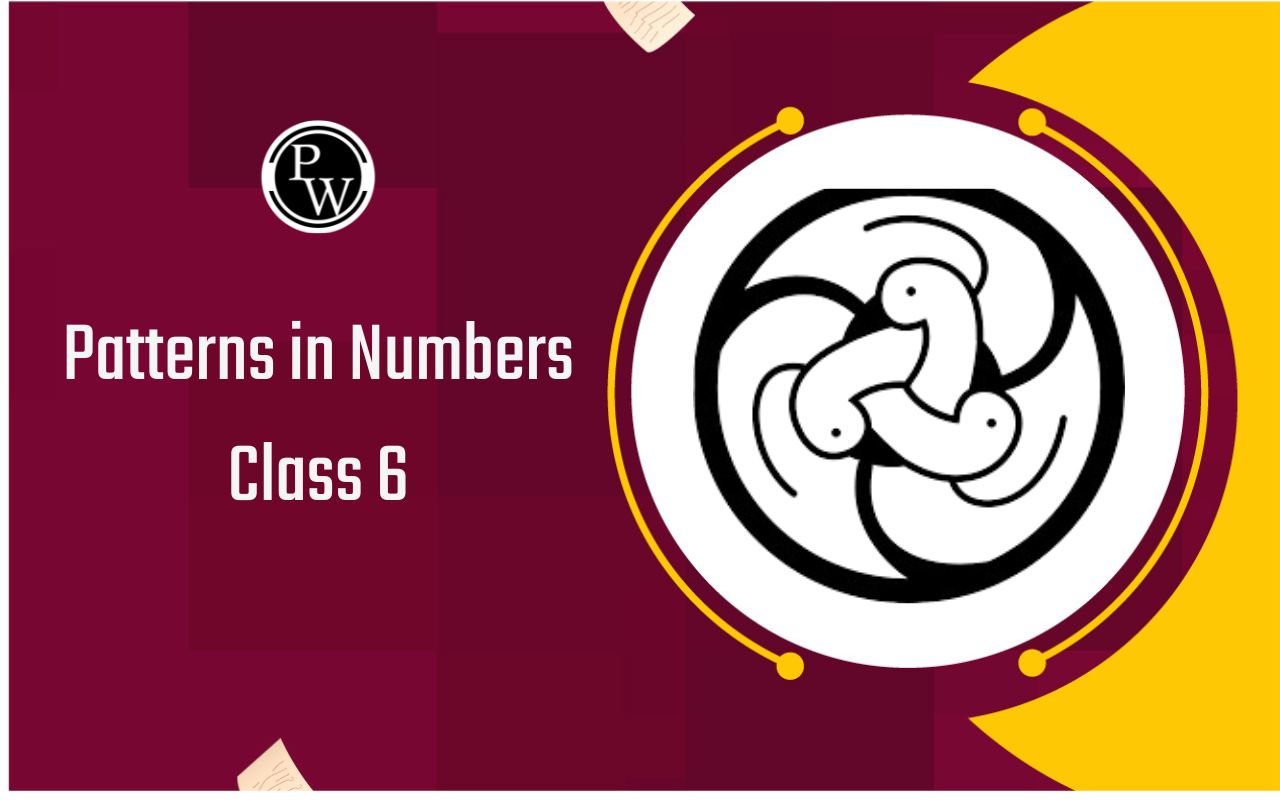
CBSE Class 6 Science Notes Chapter 11
CBSE Class 6 Science Notes Chapter 11: Physics Wallah’s CBSE Class 6 Science Notes Chapter 11 are prepared by expert science educators using the latest NCERT books. CBSE Class 6 Science Notes Chapter 11 can help CBSE class 6 science students to perform better in their final exams and score high marks.CBSE Class 6 Science Notes Chapter 11 Light, Shadows and Reflection
- Source of light: An item that produces light is known as a light source. For instance, the sun, a flashlight, etc.
- Non-luminous objects: These are items that don't produce their own light. They become visible when light shines on them. Examples include the moon, planets, etc.
- Ray of light: A direct thin beam of light from a source to an object is referred to as a ray of light.
- Obstacle: An item that blocks the path of light is known as an obstacle.
Formation of a shadow
- Every solid thing creates a shadow.
- We require a light, something solid blocking it, and a surface to see the shadow.
- Surface: It's where the shadow appears. It could be paper or the ground.
- Shadows tell us about object shapes.
- The colour of the solid object doesn't change the shadow's colour.
- The area behind the solid object also appears filled with shadow.
CBSE Class 10 Science Sample Paper 2023-24
Image formed by a pinhole camera
Pictures made by a pinhole camera appear flipped upside down. Below is a picture demonstrating how light rays travel from a distant object, pass through a pinhole, and then project onto a screen. When sunlight filters through the leaves of a tree, the spaces between the leaves act like small holes. These natural holes create circular images of the sun. Rectilinear propagation: Light moves in a straight path. This is known as rectilinear propagation of light. Image formation by a plane mirror: We can observe pictures using a mirror. The image produced by a flat mirror has the following characteristics:- Reflected image retains the colour of the object.
- Image is erect but laterally inverted.
Sources Of Light
Anything that emits light is referred to as a light source. Luminous objects are also known as light sources. These sources of light can be either natural or artificial. Examples of natural sources of light include the sun, stars, and insects like the firefly. Some artificial sources of light include candles, electric bulbs, and lasers.Transparent, Translucent, And Opaque Materials
Various kinds of materials behave differently when light passes through them. Based on this behaviour, we classify materials into three categories: transparent, translucent, and opaque. Transparent materials allow light to pass through them without significant scattering or absorption, making objects visible through them with clarity. Examples include clear air, glass, water, certain plastics, and cellophane paper. Translucent materials also permit the passage of light, but they scatter or diffuse it, causing a parallel beam of light to disperse in various directions. Consequently, objects are not clearly visible through translucent materials. Examples are butter paper, frosted glass, paper coated with oil, and smoked glass. Opaque materials completely block the passage of light, preventing any visibility through them. Examples include metals, mud, cement, coal, and wood. Mirrors serve as a prime example of opaque materials since they reflect light without allowing it to pass through.Propagation Of Light
Normally, light moves straight ahead. When we want to show how light travels using a drawing, we use lines and arrows. Line A line with an arrow indicates which way the light is going, and this kind of drawing is called a line drawing. A bunch of light lines moving together is known as a group of light. The ability of light to move in straight lines helps us understand many cool things about light, such as how shadows are made by solid objects and how pictures are created in a pinhole camera.Shadows
A solid object stops light from passing through it, making a dark spot on the side opposite to the light source. Similarly, a semi-transparent object also produces a slight dark spot. The dark spot made by a solid object blocking light is called a shadow. Three conditions are needed for a shadow to appear:- a source of light
- an opaque object
- a screen or surface behind the object.
| CBSE Syllabus Class 6 | |
| CBSE Class 6 Science Syllabus | CBSE Class 6 Maths Syllabus |
| CBSE Class 6 Social Science Syllabus | CBSE Class 6 English Syllabus |
Characteristics of a Shadow
A shadow possesses three main features:- It remains black, irrespective of the colour of the object casting it.
- It merely displays the shape or silhouette of the object, omitting finer details.
- The size of a shadow changes based on the gap between the object and the light source, as well as the distance between the object and the surface it falls upon.
Reflection Surfaces
We say light bounces off a surface when it's reflected. This reflection helps us see most things around us. How light reflects off a surface depends on the surface's nature. A rough, bumpy surface (also called irregular) reflects light in different directions when a parallel beam hits it. An example of this is tree bark or a blanket. This type of reflection is called diffused reflection. On the other hand, a smooth surface (highly polished) reflects light in one direction when a parallel beam hits it. A mirror is a good example of a smooth surface. When you stand in front of a mirror, you see your image reflected. A fascinating thing happens when an object makes a reflection to form an image. We often observe this when looking at ourselves in a mirror. For example, when we raise our right hand, the image in the mirror appears to raise its left hand. This apparent switch from left to right is known as lateral inversion. An image and a shadow are not the same.A Pin-hole Camera
A pinhole camera is basically a box with a very small hole on one of its sides. Light enters through the hole, and a reversed image appears on the opposite side of the hole. The human eye behaves quite similarly to a pinhole camera.Summary
Source of light: A thing that emits light (luminous object) is referred to as a light source. Transparent material: A substance that lets all light pass through it is known as a transparent material. Translucent material: A substance that allows light to pass through to some extent is known as a translucent material. Opaque material: An object that fully stops light from passing through is referred to as an opaque material. Shadow: A shadow is created when something solid blocks light, resulting in a dark area. Items may be clear, partly clear, or not clear, depending on how much light they let through. When something solid prevents light from reaching a surface, it creates a shadow. No matter the colour of the object, a shadow always appears dark. When light rebounds off a surface, we describe it as being reflected. Surfaces that are uneven scatter light in various ways. Smooth surfaces send light back in one direction. An image displays the hue, shape, and specifics of an object.CBSE Class 6 Science Notes Chapter 11 PDF Download
Important Questions on CBSE Class 6 Science Notes Chapter 11 Light Shadows and Reflections
What is the definition of light? Light is the energy we get from the sun, a lamp, or similar sources, which enables us to see things. What are the characteristics of light according to Science Chapter 11 Class 6? Light is often described as the natural force that allows us to see and makes objects visible. It's a type of energy that can't be seen by itself, but we notice it through dust particles in the air. While light itself isn't visible, it illuminates other objects. There are various origins of light, including natural ones like the sun and artificial ones like candles or electric torches. How are shadows formed as given in Class 6 Science Chapter 11? The NCERT textbook gives a simple explanation of what a shadow is. It talks about how shadows form and the different kinds and features they have. Basically, when something blocks light, it creates a shadow, which is an area where there's no light. If an object blocks light from a source, it makes a shadow. Shadows are divided into umbra and penumbra, depending on how much the source is blocked. Students can learn more by checking out the Physics Wallah app or website. What is a range of visibility? The distance across (in kilometres or miles) where a big dark object becomes visible against the sky at the horizon during the daytime. What is Chapter 11 of Class 6 Science based on? Chapter 11 of Class 6 Science, titled "Light, Shadows, and Reflections," focuses on understanding light, shadows, and reflection. The chapter from the NCERT book explains these concepts clearly, covering topics such as sources of light, their types, and functions, as well as different types of optical media. It also discusses shadows and their properties. The notes provided are straightforward, making it simpler for students to grasp these ideas. What are optical media? Light helps us see things and makes objects visible. Optical media are things that let light pass through them, either fully or partly. There are three kinds of optical media: transparent, translucent, and opaque. Transparent media let light pass through fully, translucent ones let some light through, and opaque ones don't let any light through at all. What are the uses of spherical mirrors?- Employed as a rearview mirror.
- Safety mirrors.
- Monitoring mirrors.
CBSE Board Exam Centre List 2024
Significance of CBSE Class 6 Science Notes Chapter 11
The importance of the "Light, Shadows, and Reflections" Class 6 CBSE Science Chapter 11 notes, which are freely available as PDF downloads, cannot be overstated in the field of science education. These notes simplify complex scientific ideas related to how light behaves, shadows, and reflections, making them easy to understand for young students. They offer clear explanations and detailed insights into the topic, helping students grasp the basic principles that govern the fascinating world of optics. Additionally, these notes encourage curiosity and critical thinking by using real-life examples and practical applications. Being freely available as PDF downloads ensures that educational materials are accessible to all students, promoting equal learning opportunities. These notes enhance the learning process, fostering both scientific understanding and a sense of wonder about the mysteries of light, shadows, and reflections in our everyday lives.Related Links -
How Do Light, Shadows and Reflections Affect Our Daily Life?
Light, shadows, and reflections play a big role in our daily lives, affecting many parts of how we experience and interact with the world around us.- Visibility: Light helps us see things around us, like objects and where we're going, whether it's daylight outside or lights inside our houses.
- Time Management: Shadows help us know what time it is during the day. Things like sundials use shadows to tell time accurately.
- Safety: Light and shadows are important for safety. Things like reflectors and traffic lights use how light reflects and shadows work to keep drivers and walkers safe.
- Art and Aesthetics: Artists and architects use light and shadows to make their work look more real and create different feelings. Lighting in homes and public places is a big part of how things look.
- Technology: Light is the reason we have cameras, projectors, and other important things like optical fibres. These technologies have changed how we talk, have fun, and take care of our health.
- Scientific Exploration: Scientists use light to learn about the world around us. Tools like microscopes and telescopes depend on how light acts to make discoveries.
How to Prepare with CBSE Class 6 Science Notes Chapter 11
Preparing with CBSE Class 6 Science Notes for Chapter 11 requires a structured approach to understand and retain the concepts effectively. Chapter 11 typically covers topics related to Light, Shadows, and Reflections. Here's a detailed guide on how to prepare with CBSE Class 6 Science Notes for this chapter: Understand the Syllabus- Start by understanding the syllabus prescribed by CBSE for Class 6 Science, particularly focusing on Chapter 11.
- Make a note of the key topics covered in this chapter.
- Obtain your CBSE Class 6 Science textbook and any supplementary study materials recommended by your teacher or provided by the school.
- Use reference books or online resources for additional explanations and practice questions.
- Read through the chapter carefully, paying close attention to definitions, explanations, and examples provided in the textbook.
- Highlight or jot down important points, formulas, and concepts as you read.
- Create your own concise notes summarising the main points of the chapter. Use bullet points, diagrams, and tables to organise information.
- Write down definitions, key terms, and any formulas or equations related to light, shadows, and reflections.
-
Identify the core concepts presented in the chapter, such as:
- Properties of light: Reflection, refraction, dispersion.
- Formation of shadows: Opaque, translucent, and transparent objects.
- Reflection of light: Laws of reflection, regular and irregular reflection.
- Ensure clarity on these concepts through reading, note-taking, and practice.
- Use diagrams, illustrations, and animations to visualise concepts like the formation of shadows, reflection of light, and properties of light.
- Watch educational videos or use interactive simulations to enhance your understanding.
- Solve numerical problems provided in the textbook or supplementary study materials.
- Practice calculating angles of incidence and reflection, determining image formation in mirrors, etc.
- Regularly review your notes and concepts to reinforce your understanding.
- Test yourself with sample questions or quizzes to assess your knowledge.
- Revise the chapter periodically to ensure retention and to address any areas of weakness.
- Don't hesitate to ask your teacher or classmates if you encounter any difficulties or have doubts about certain concepts.
- Utilise online forums or tutoring services if you need additional assistance.
- Relate the concepts learned in Chapter 11 to real-life examples and phenomena.
- Conduct simple experiments or observations related to light, shadows, and reflections to reinforce your understanding.
- Allocate regular study time for Science and maintain a consistent study schedule.
- Keep your notes and study materials organised for easy reference.
CBSE Class 6 Science Notes Chapter 11 FAQs
Can light travel through a vacuum?
Yes, light can travel through a vacuum because it does not require a medium for propagation, which is why we can see sunlight reaching us from the Sun.
How can we measure the speed of light?
The speed of light can be measured using various methods, including timing the delay between sending and receiving signals in experiments involving light reflection or refraction.
What is the law of reflection?
The law of reflection states that the angle of incidence is equal to the angle of reflection, with both angles measured relative to the normal (perpendicular) to the reflecting surface.
Why does the sky appear blue?
The sky appears blue due to Rayleigh scattering, where shorter blue wavelengths of light are scattered more by molecules in the Earth's atmosphere, making the sky appear blue.
How does a solar cooker utilise the principles of reflection?
A solar cooker uses mirrors to focus sunlight onto a cooking area, harnessing the principles of reflection to concentrate solar energy and generate heat for cooking.
Talk to a counsellorHave doubts? Our support team will be happy to assist you!

Check out these Related Articles
Free Learning Resources
PW Books
Notes (Class 10-12)
PW Study Materials
Notes (Class 6-9)
Ncert Solutions
Govt Exams
Class 6th to 12th Online Courses
Govt Job Exams Courses
UPSC Coaching
Defence Exam Coaching
Gate Exam Coaching
Other Exams
Know about Physics Wallah
Physics Wallah is an Indian edtech platform that provides accessible & comprehensive learning experiences to students from Class 6th to postgraduate level. We also provide extensive NCERT solutions, sample paper, NEET, JEE Mains, BITSAT previous year papers & more such resources to students. Physics Wallah also caters to over 3.5 million registered students and over 78 lakh+ Youtube subscribers with 4.8 rating on its app.
We Stand Out because
We provide students with intensive courses with India’s qualified & experienced faculties & mentors. PW strives to make the learning experience comprehensive and accessible for students of all sections of society. We believe in empowering every single student who couldn't dream of a good career in engineering and medical field earlier.
Our Key Focus Areas
Physics Wallah's main focus is to make the learning experience as economical as possible for all students. With our affordable courses like Lakshya, Udaan and Arjuna and many others, we have been able to provide a platform for lakhs of aspirants. From providing Chemistry, Maths, Physics formula to giving e-books of eminent authors like RD Sharma, RS Aggarwal and Lakhmir Singh, PW focuses on every single student's need for preparation.
What Makes Us Different
Physics Wallah strives to develop a comprehensive pedagogical structure for students, where they get a state-of-the-art learning experience with study material and resources. Apart from catering students preparing for JEE Mains and NEET, PW also provides study material for each state board like Uttar Pradesh, Bihar, and others
Copyright © 2025 Physicswallah Limited All rights reserved.
Get App







